UPDATE : Kiltearn Old Kirk - “A Key to the Past”
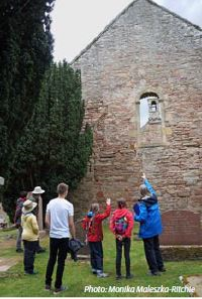 After months of activity, the results of the Kiltearn Old Kirk project are now being pulled together. This absorbing project, organised by the Trust with funding from the Heritage Lottery Fund, Kiltearn Community Council and the Clan Munro Assoc., has revealed fascinating new information about the old kirk.
After months of activity, the results of the Kiltearn Old Kirk project are now being pulled together. This absorbing project, organised by the Trust with funding from the Heritage Lottery Fund, Kiltearn Community Council and the Clan Munro Assoc., has revealed fascinating new information about the old kirk.
Did you know.......
· the first pastor at Kiltearn Old Kirk is recorded in 1227?
· the east side of the kirk preserves the remains of a medieval window and there are at least two phases of post-reformation building?
· in the 1500s there was a thriving hamlet around the kirk with a mill, alehouse and crofts?
· gravestones in the original kirkyard date back to the 17th century?
· the ancestor of an American president (a Munro of course) is buried in the kirkyard?
These and many other interesting details about the old kirk have been uncovered since the beginning of the year through a programme of 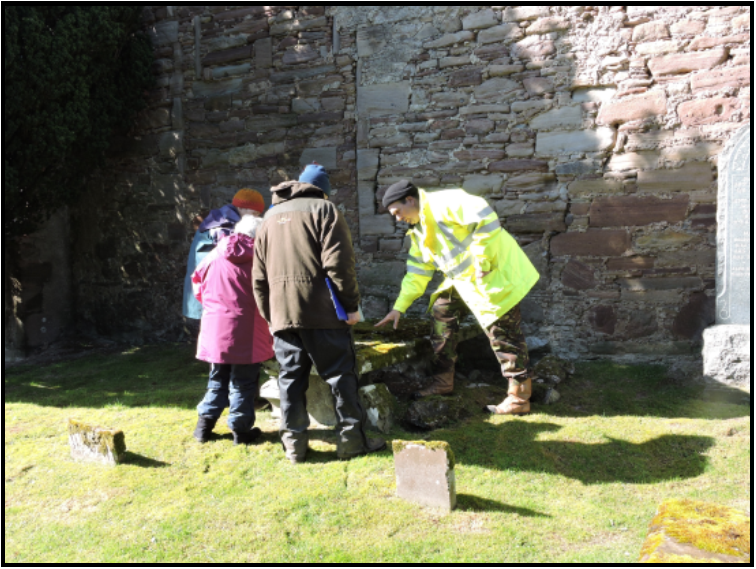 activities and facilitated sessions led by ARCH and Highland Archives often attracting up to 40 people. They have looked at archival and published material in papers held in Highland Archives, with some from Foulis Castle providing information dating back into the medieval period. Hector Munro also kindly allowed participants to look at other more recent documents still held at the castle. The Kirk Session records, surviving in patches from the 1690s provided fascinating snapshots of information about the kirk and life in the parish at that time.
activities and facilitated sessions led by ARCH and Highland Archives often attracting up to 40 people. They have looked at archival and published material in papers held in Highland Archives, with some from Foulis Castle providing information dating back into the medieval period. Hector Munro also kindly allowed participants to look at other more recent documents still held at the castle. The Kirk Session records, surviving in patches from the 1690s provided fascinating snapshots of information about the kirk and life in the parish at that time.

Volunteers have recorded gravestones, learnt how to research family history, and how to create a standing building survey. Classes from Kiltearn PS have visited the kirk to photograph or draw the ruins and its medieval features as well as some of the gravestones.
The final phase of the project involves preparing and erecting a signboard about the historic kirk near the kirkyard entrance as well as preparing materials for a local exhibition.
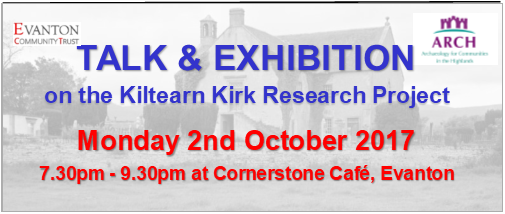
_____________________________________________________________________________________________________________________________________________
 The lovely old ruins of the Kiltearn Old Parish Church are without doubt one of the most important historical sites in the village. Set in the tranquil burial ground that many in the village will know so well, the old Parish Church is an important feature of the village and it is essential that it be preserved.
The lovely old ruins of the Kiltearn Old Parish Church are without doubt one of the most important historical sites in the village. Set in the tranquil burial ground that many in the village will know so well, the old Parish Church is an important feature of the village and it is essential that it be preserved.
Situated close to the shore of the Cromarty Firth, the Kiltearn Old Parish Church is significant for a number of reasons. It is believed it stands on the site of a much earlier church and not only does it preserve in its structure some vestiges of the pre-Reformation Church that it replaced, but its long history is so intimately tied up with the individual histories of the inhabitants of Kiltearn, that to let it fall into further decay would be a travesty.
Since 1588 it has been the burial place of the Munros of Foulis. It also has the Novar family enclosure and there are several 17th and 18th century gravestones in the graveyard. Rebuilt in 1791, it housed the Lairds gallery entered by the outside stair and its history is important to not only the families who live in the area but also to the history of the Church of Scotland as a whole.
On the outside of the east wall of the church, part of a former arch can be seen, probably belonging to the previously-mentioned earlier church. A re-used fragment of a medieval cross slab can be seen on the exterior of the south wall of the nave at first floor level and towards the east end of the building.
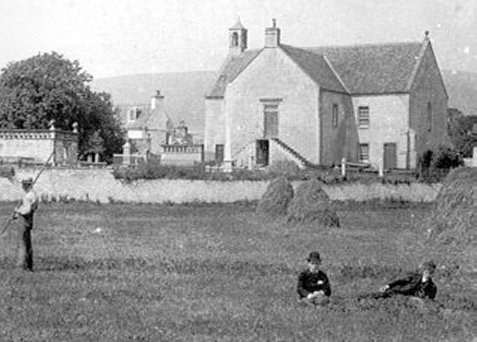
Discussions on the buildings future have been on going with various bodies almost since the roof was removed in the 1950’s. More recently, meetings between the Evanton Community Trust, the local Church Congregational Board and Highland Council together with Church Commissioners from Edinburgh have begun to consider how the future of this historic site can be safeguarded.
As a first step, architects came up with detailed proposals on securing the existing structure whilst discussions were held between the Trust and the local Church Congregational Board (who currently own the building) on strategies for the future development and usage of the Old Church and its immediate vicinity. One idea is to any development of the Church within the context of a wider plan encompassing, for example, new footpaths in the surrounding area.
Clearly, this h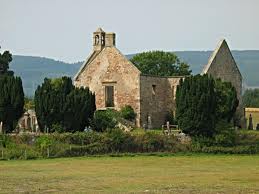 as the potential to become a major project for the village and the area and the Trust has begun to undertake extensive community consultations on ideas for the future development of this part of the village leading to what is hoped will be a viable plan for safeguarding this historical site for future generations.
as the potential to become a major project for the village and the area and the Trust has begun to undertake extensive community consultations on ideas for the future development of this part of the village leading to what is hoped will be a viable plan for safeguarding this historical site for future generations.

